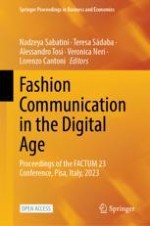1 Introduction
-
While communicating on Corporate Fashion Museums, luxury brands undertake an audience targeting process, implying a differentiation of the visitors. More specifically, museum managers define the accessibility of spaces according to the displayed contents;
-
Fashion houses implement performative policies: Corporate Fashion Museums are used as marketing tools. The above-mentioned policy is staged and expressed on various physical performative space(s).
2 Study Methods
3 Staging Fashion in Museums (and Beyond)
3.1 Fashion, Museums, and Museology: Narrating a Cultural Heritage ‘In the Making’
Kind of Corporate Fashion Museum | Specifications related to the location | Museum examples in France |
|---|---|---|
Museum located in a production site which is still active | The museum space is integrated into the production site. The museum’s visit usually includes the presentation of the production machines and allows visitors to meet artisans | Maison de Broderies Vermont (Paris) |
Museum located in the former production site which has been specifically rehabilitated | Enhancement of the industrial architecture of the site. The building becomes an integral part of the heritage that deserves to be promoted. Firms frequently choose old production buildings (industrial wastelands) that have become obsolete | Museum of Shirt Manufacturing (Argenton-sur-Creuse) |
Museum located in a historic building owned by the company’s owners | The museum is located in the former living quarters of the brand’s owners (e.g. the director’s house). The displays focus on the biographical aspects of the owners. Any intimate element of the family contributes directly to the brand’s narrative, becoming a marketing tool | Louis Vuitton ‘maison de famille’ (Asnières-sur-Seine) |
Museum located in a building made ex novo | The company decides on a location that is representative of the image it wants to convey to the public. The location is not necessarily determined by the geographical proximity to the production site. The opening of such a museum can also be the consequence of a relocation | Pierre Cardin museum (Paris) |
